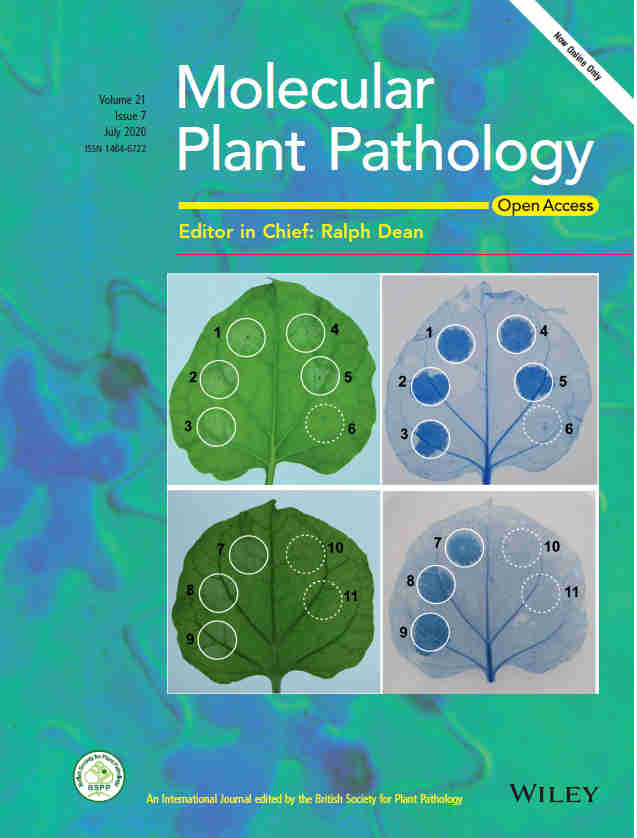Nucleotide-binding (NB) and Leucine-rich repeat (LRR) receptors (NLRs) directly or indirectly recognize pathogen effectors to initiate effector-induced immune response (ETI), thus causing the death of host cells. Previous studies have revealed that the activated NLR has cell death-inducing activity and that the activity is closely related to the change of its structure. However, the molecular mechanism of NLR activity regulation is currently unclear. Furthermore, because components involved in NLR-induced cell death and disease resistance pathways have not been identified, the relationship between these two signaling pathways has not yet been determined. Wheat powdery mildew resistance gene Pm21 encodes an NLR protein with a coiled-coil (CC) domain. The molecular mechanism of Pm21-mediated resistance and the regulatory of cell death activity are currently unclear.
Here, we report comprehensive biochemical and functional analyses of Pm21 CC domain in Nicotiana benthamiana. We found that overexpression of the Pm21 CC domain can induce cell death in Nicotiana benthamiana, whereas the CC-containing truncations, including CC-NB and CC-NB-LRR, do not induce cell death responses. Coimmunoprecipitation (Co-IP) assay showed that the CC domain self-associates and interacts with the NB and LRR domains in planta. These results imply that the activity of the CC domain is inhibited by the intramolecular interactions of different domains in the absence of pathogens. We found that the LRR domain plays a crucial role in D491V-mediated full-length (FL) Pm21 autoactivation
In previous study, we showed that some mutations in the CC domain resulted in loss of Pm21 resistance function. In this study, the authors investigated the effect of these mutations on cell death activity. It was found that some amino acid mutations affected the cell death-inducing activity of the CC domain. Furtherly, the authors introduced these mutation sites into the autoactivation mutant D491V. The result showed that the mutations of R73 and E80 suppressed the D491V-mediated cell death activity of full-length Pm21, but did not affect the inherent signaling properties of the individual CC domain. We conclude that the residues R73 and E80 may participate in autoactivation mechanism in the absence of pathogens. As some mutations that abolish resistance to powdery mildew do not affect the cell death-inducing activity, it is suggested that Pm21-governed cell death signaling and disease-resistance signaling are potentially independent of each other.
In summary, we revealed the intramolecular regulatory mechanism of the Pm21 CC activity in terms of cell death activity, which provides new insights into NLR-mediated cell death signaling and broadens our knowledge of the relationship between NLR protein function and its structure.

This work entitled “Pm21 CC domain activity modulated by intramolecular interactions is implicated in cell death and disease resistance” has been published in form of front cover in Molecular Plant Pathology on May 18, 2020. Associate Professor Gao Anli is the first author.
Paper link:https://bsppjournals.onlinelibrary.wiley.com/doi/full/10.1111/mpp.12943
DOI: 10.1111/mpp.12943


